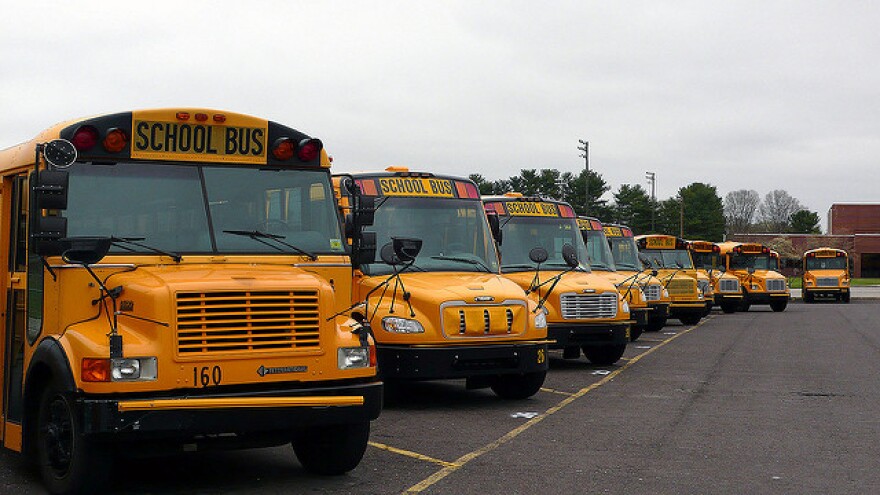Adam Bolenbaugh spends his lunch break picking up his niece from the bus stop. He never knows if he’ll be waiting five minutes or an hour.
The COVID-19 pandemic exacerbated a years-long school bus driver shortage in north central Florida, and has strained staff and families during the fully in-person school year.
The walk from the stop is about 2 miles. That’s too far for 7-year-old Jazmine Moore, an M.K. Rawlings Elementary first-grader, to do alone, so Bolenbaugh sometimes works late to be there for her, he said. Without fully staffed transportation departments, the drivers are also working later for students’ sake.
Local school districts including Alachua, Marion, Putnam and Bradford are recruiting bus drivers, which is not abnormal as many school districts hire year round. But the pandemic amplified the need with quarantine absences and a reduction in staff.
ACPS driver Nancy Mason missed the first 10 days of school because she contracted COVID-19. Coworkers compensated by picking up her routes – something that they all became acquainted with ever since schools returned in person last year. Drivers left school districts dueto the threat of exposure, especially around students who are too young to be vaccinated.
ACPS drivers are in the middle of a district mask controversy that has gotten national attention. Mason drives students who medically cannot wear masks, and has had bus aides express concern to her for their health or that of people they live with.
“The majority of people give their all,” she said. “It’s just so chaotic.”
In her 13 years driving for Alachua County Public Schools, Mason hasn’t considered switching jobs. She loves working with kids, but she sees the appeal of some of her coworkers’ choices to drive for Gainesville’s Regional Transit System, which has a higher base pay, or accepting another job with less intense responsibility.
ACPS has instituted summer routes, seven-hour work days, health insurance and pay while getting licensed to incentivize bus drivers to stay with the district, said spokesperson Jackie Johnson. But the risks of COVID-19 outweighed these for some drivers, and transportation office staff have sometimes filled in.
Marion County used many of the same tactics in addition to soliciting contractors from another vendor, changing some routes to maximize time and space in the large district, and hiring more part-time staff, said Rebecca Rora, director of transportation.
But they are still 18 staffers short of the 275 positions that could be filled, she said. That number is further strained by regular daily absenteeism and longer term medical leaves.
In a district as large as Marion, a county the size of Rhode Island, bus routes are necessary to have students in classrooms, said Marion schools spokesperson Kevin Christian. The school district had 7,000 students riding buses during the pandemic, but that is closer to 22,000 now that schools have returned to fully in person,
While the challenges facing the industry have existed pre-pandemic, they were further aggravated recently, said Jeff Edison, Bradford Schools director of operations and safety. His district has all 31 bus driver routes filled, but only 2 of at least 6 substitute positions. A solution is necessary, he said, as bus drivers play an essential role in the school system.
“Bus drivers are the ones who kids see first and last every day,” he said. “We need to make sure that we have not just quality drivers, but quality people in those roles.”

